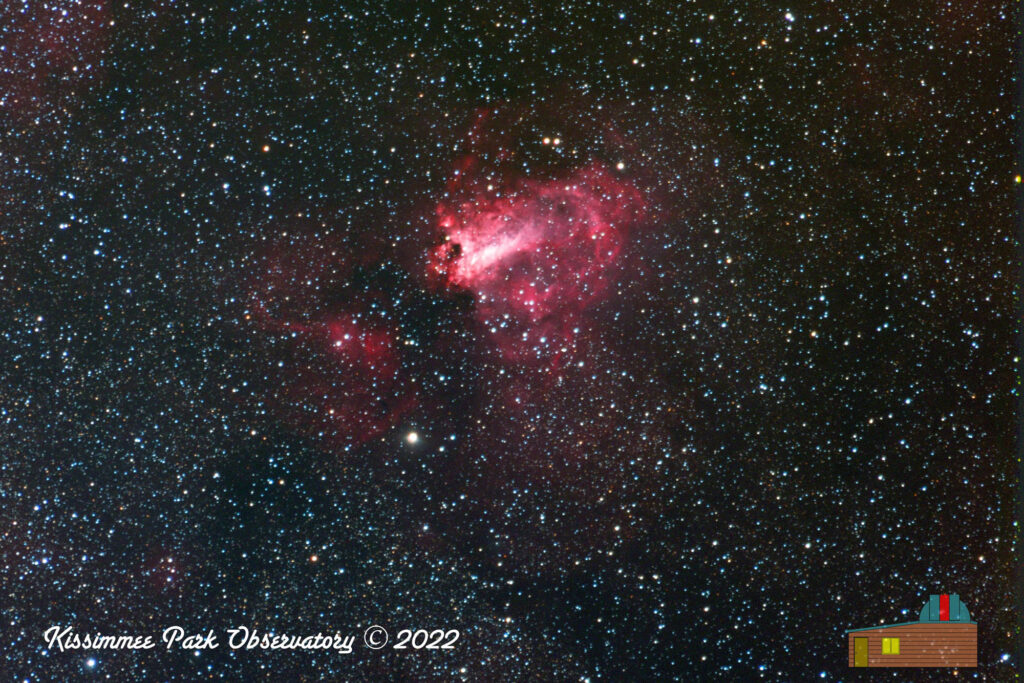This is the massive emission nebula M17 in Sagittarius, also known as the “Swan Nebula” due to the waterfowl shape of the main nebula section. It is also known as the “Omega Nebula”.
This emission nebula is between 5,000 and 6,000 light-years from Earth and it spans some 15 light-years in diameter. It is considered one of the brightest and most massive star-forming regions of our galaxy. Its local geometry is similar to the Orion Nebula except that it is viewed edge-on rather than face-on.
The open cluster NGC 6618 lies embedded in the nebulosity and causes the gases of the nebula to shine due to radiation from these hot, young stars; however, the actual number of stars in the nebula is much higher – up to 800. It is also one of the youngest clusters known, with an age of just 1 million years.
Click on the image to see a larger version you can explore.
Image Info
- Imaged from the KPO field in Saint Cloud, Florida.
- Camera : ZWO ASI1600MM Pro
- Lens: Canon 100-400 f/5.6L lens, set to 400mm
- Mount: iOptron SmartEQ Pro
- Red: 11 subframes of 300s = 55 min integration
- Green: 10 subframes of 300s = 50 min integration
- Blue: 12 subframes of 300s = 60 min integration
- Hydrogen Alpha (luminance): 15 subframes of 300s = 75 min integration
- Total integration time: 240 min = 4.0 hours.
- Captured via ASIAir Pro automation
- Optical tracking via ASIAir automation, currently using ST4 mount control via the ASI120MM-S guide camera
- Separate channels stacked and LRGB integrated in Astro Pixel Processor
- Image cropped, stretched, and noise processed in Nebulosity.
- Final processing in Aperture

